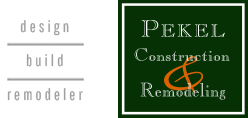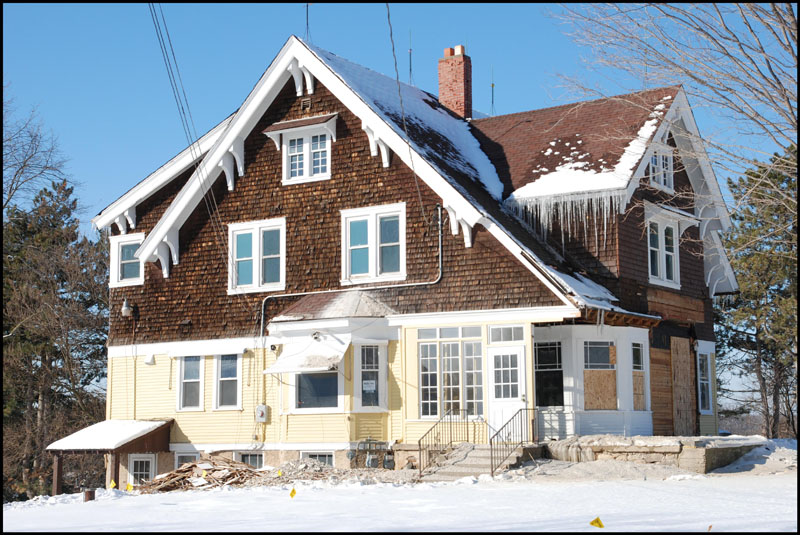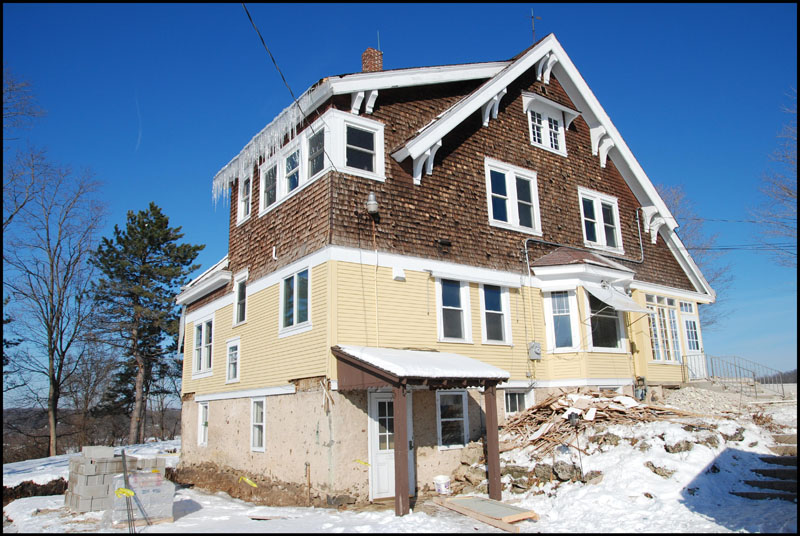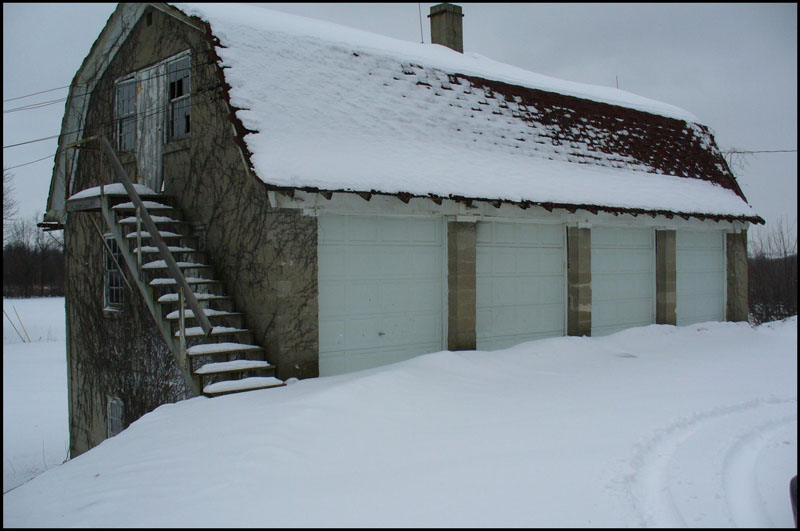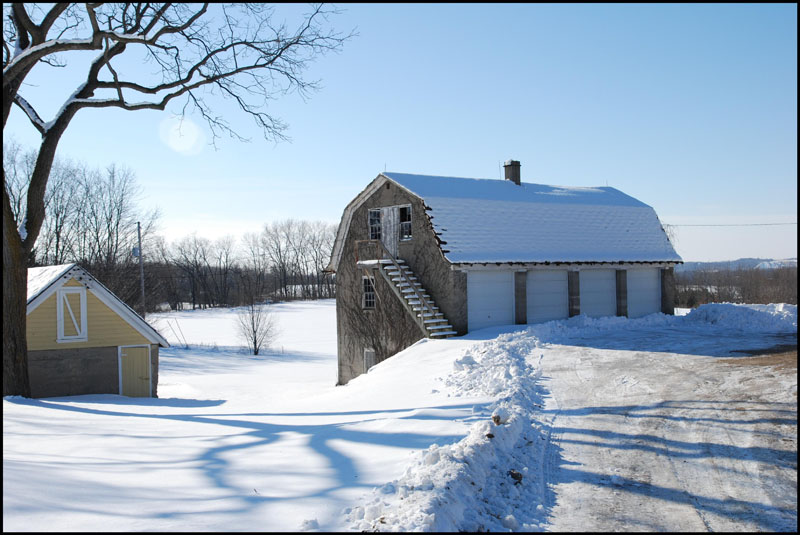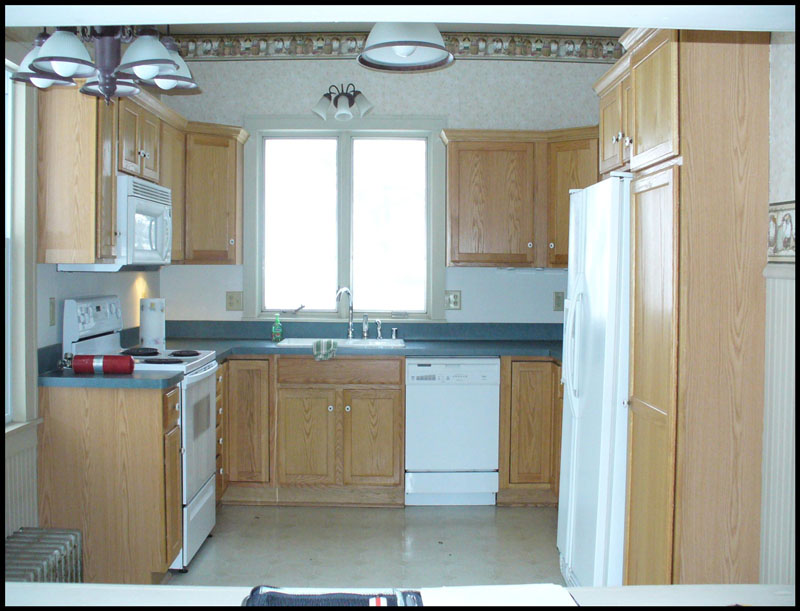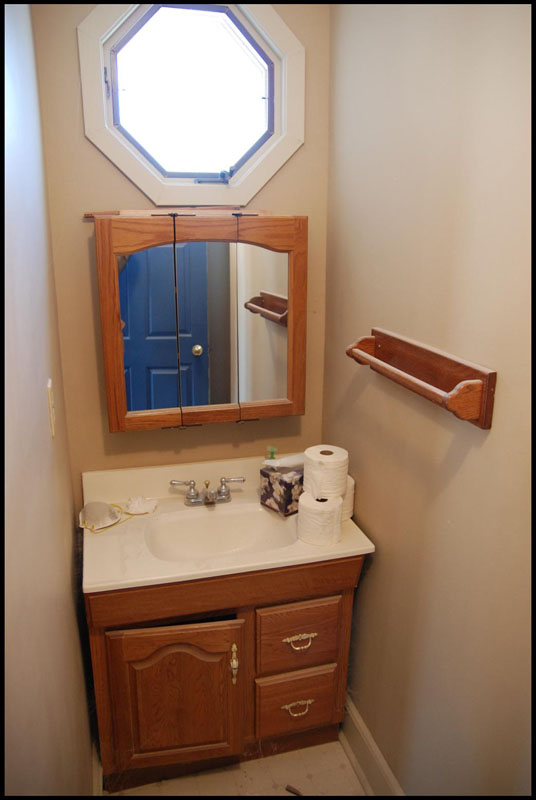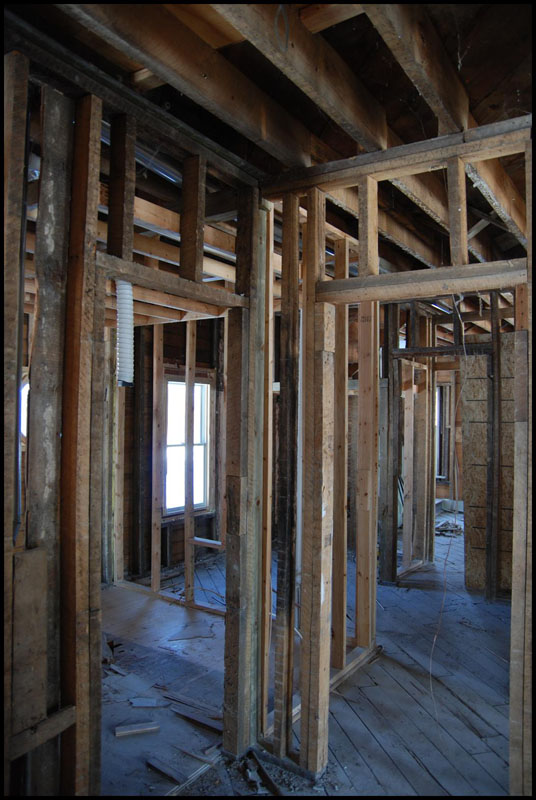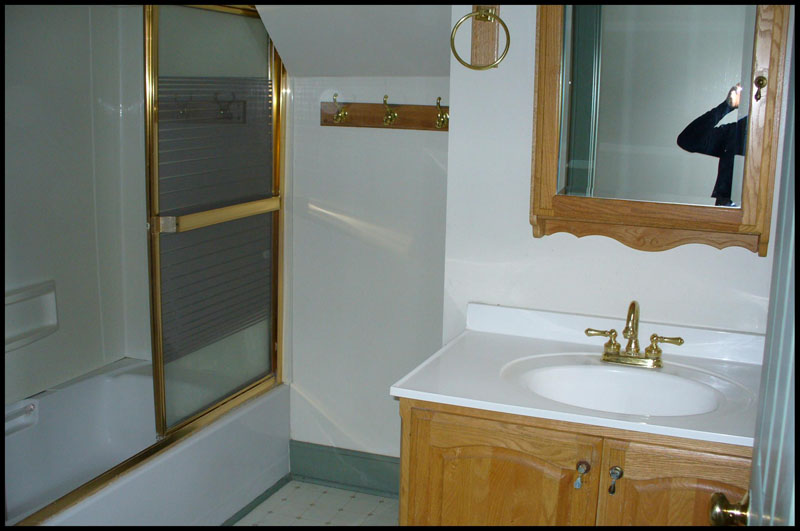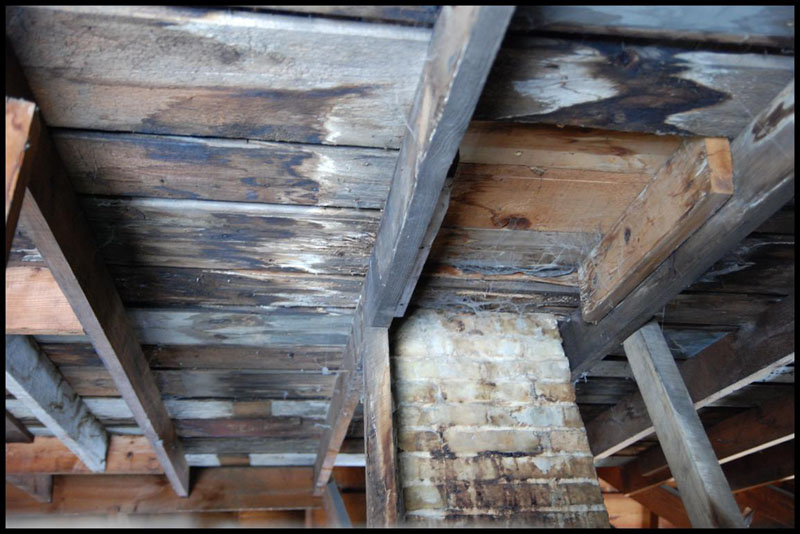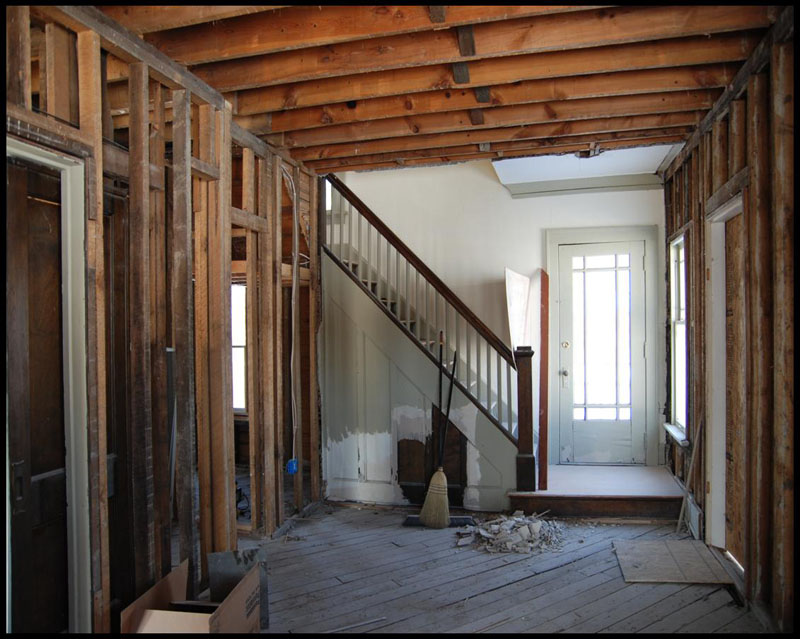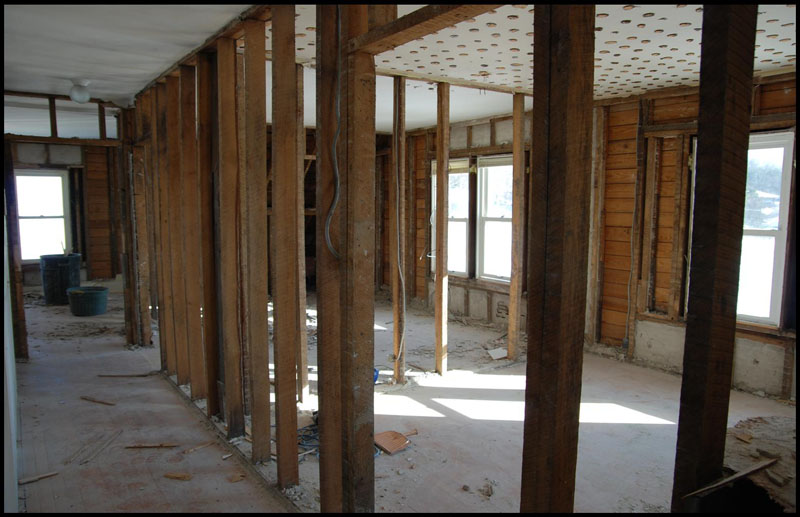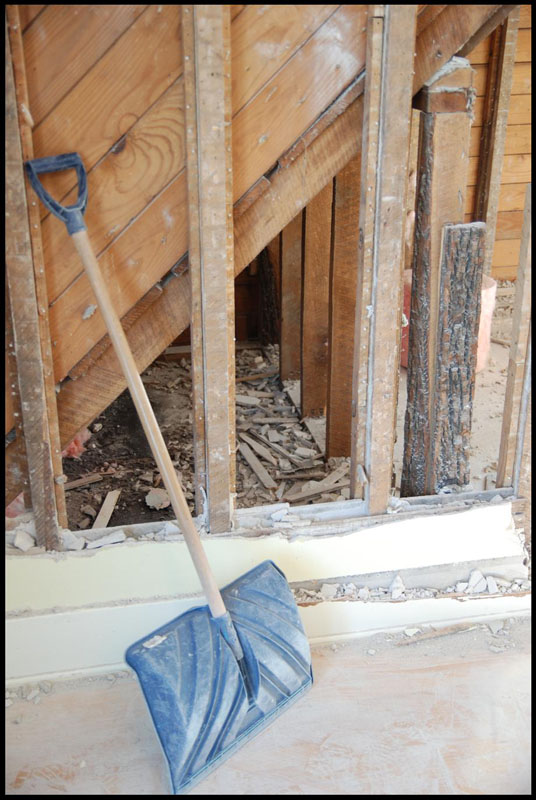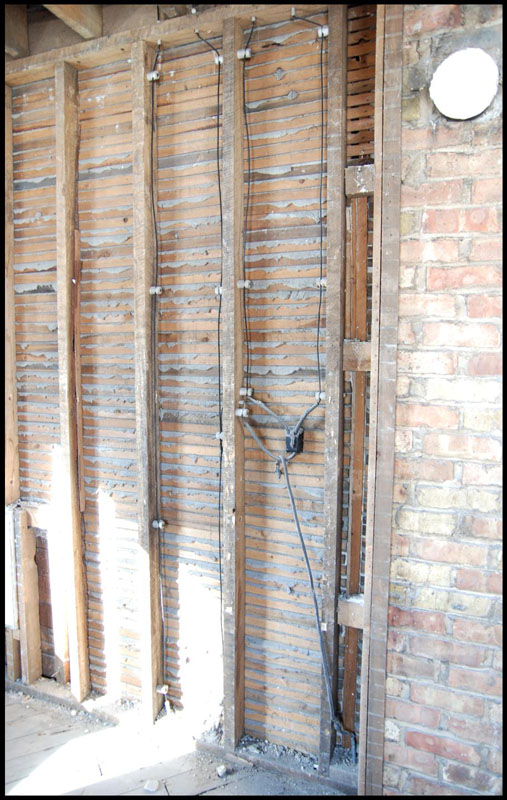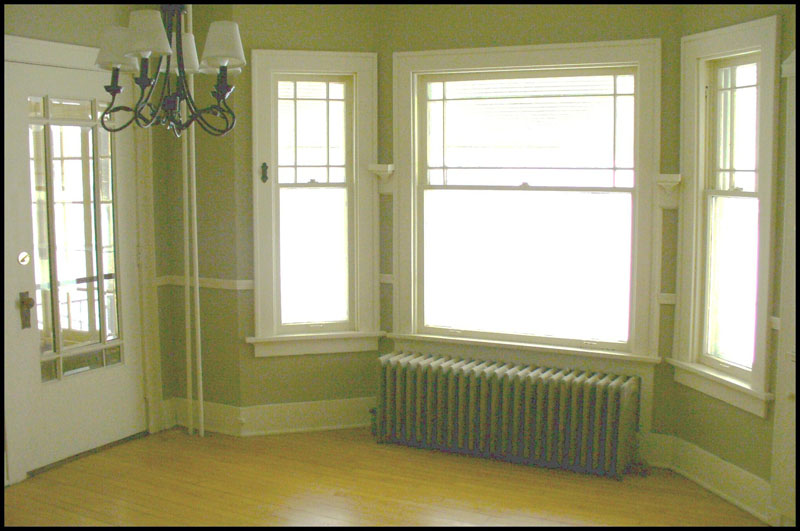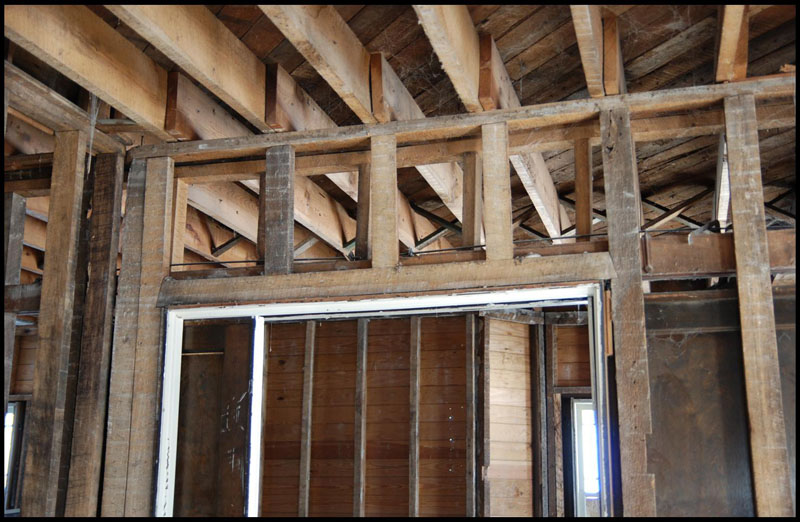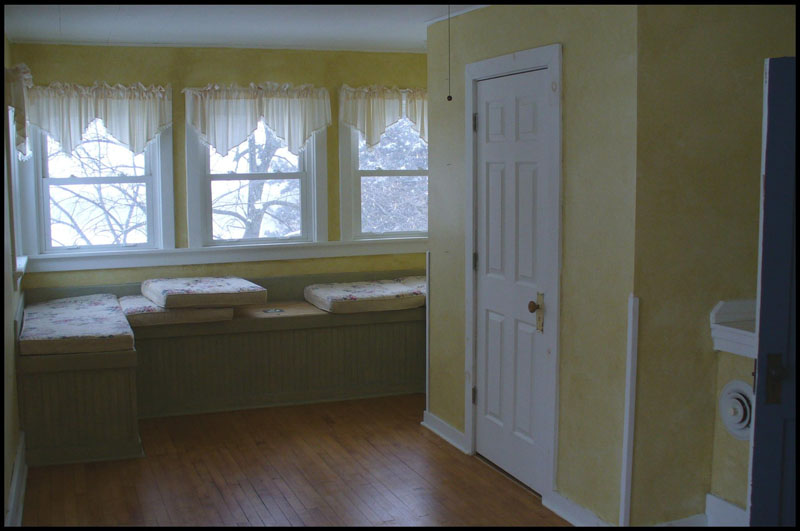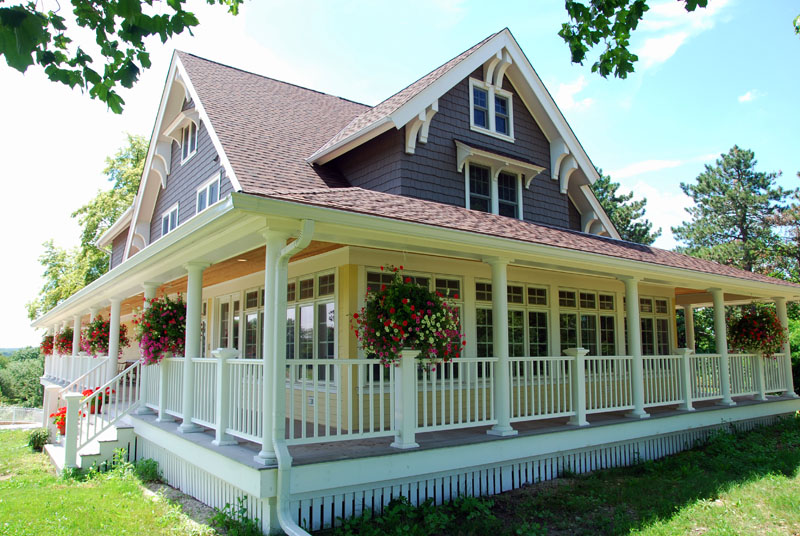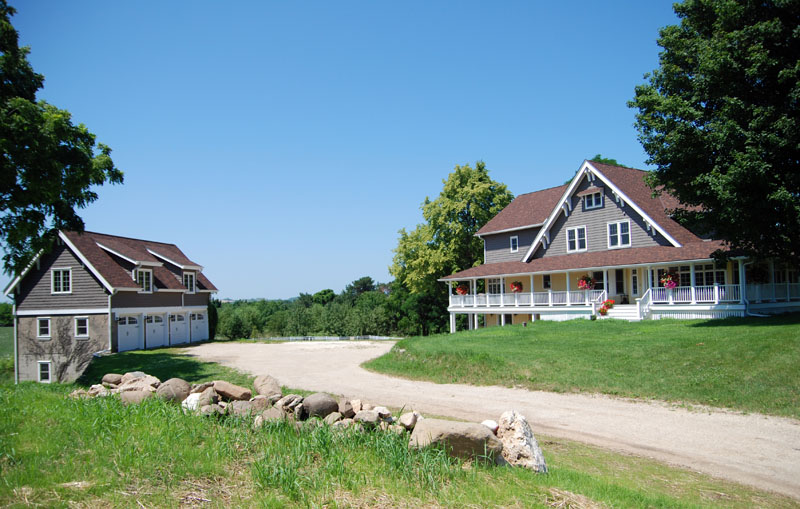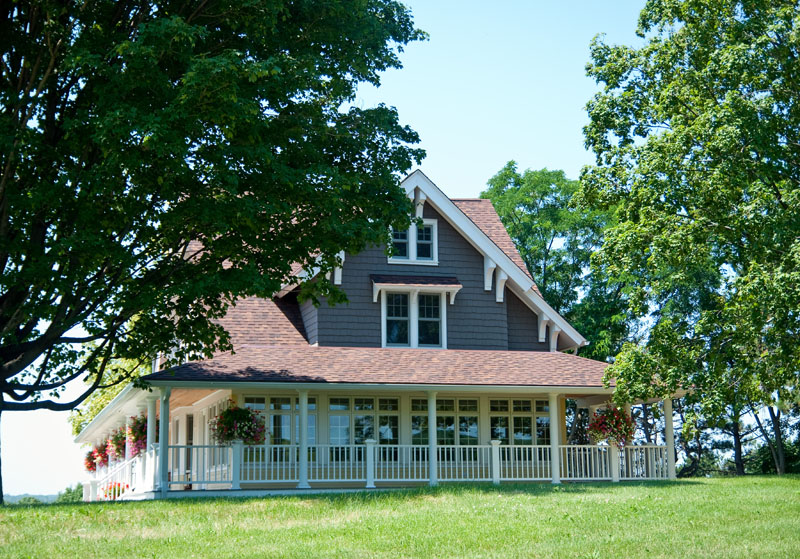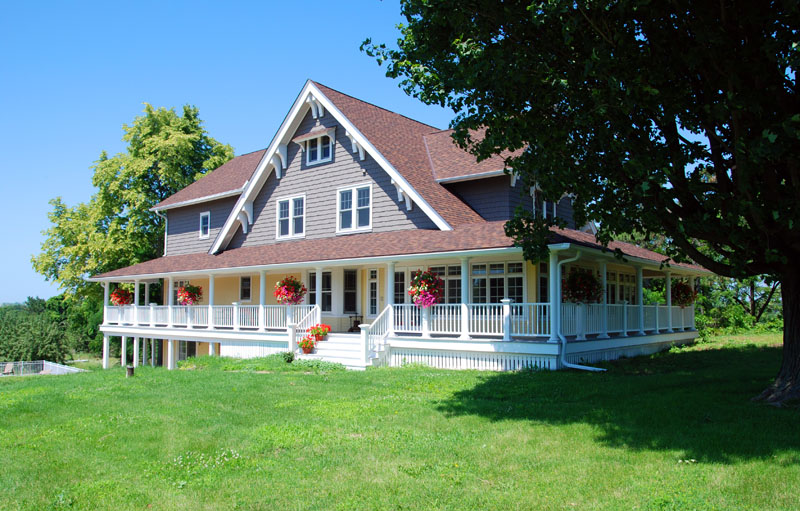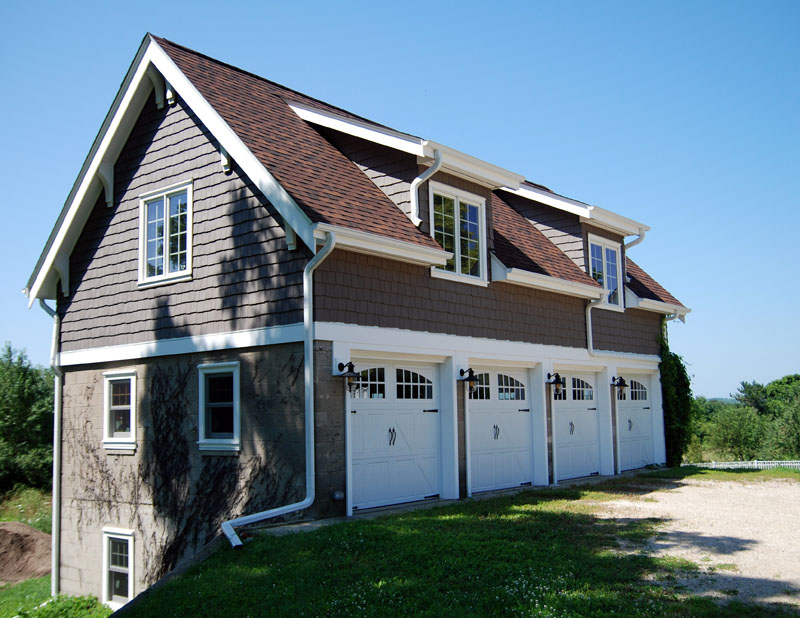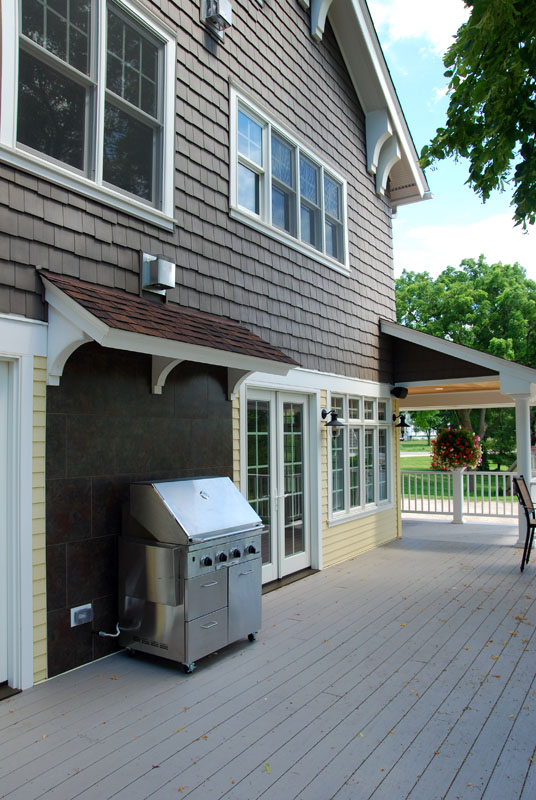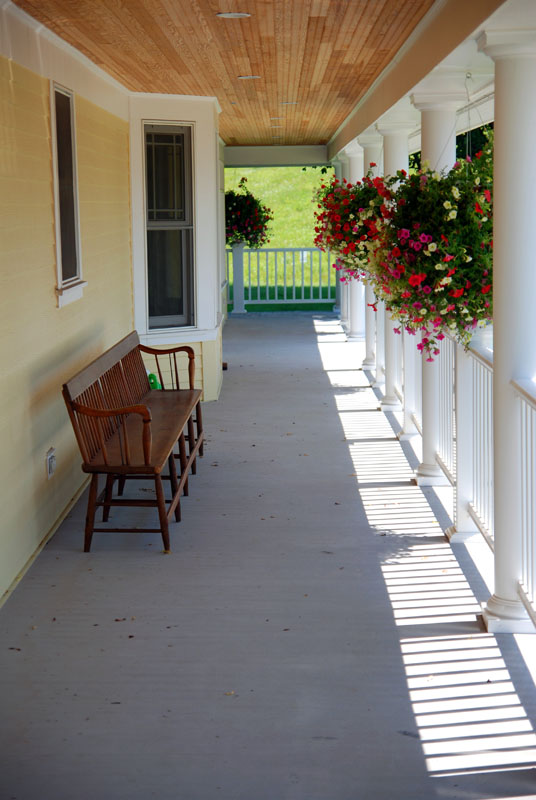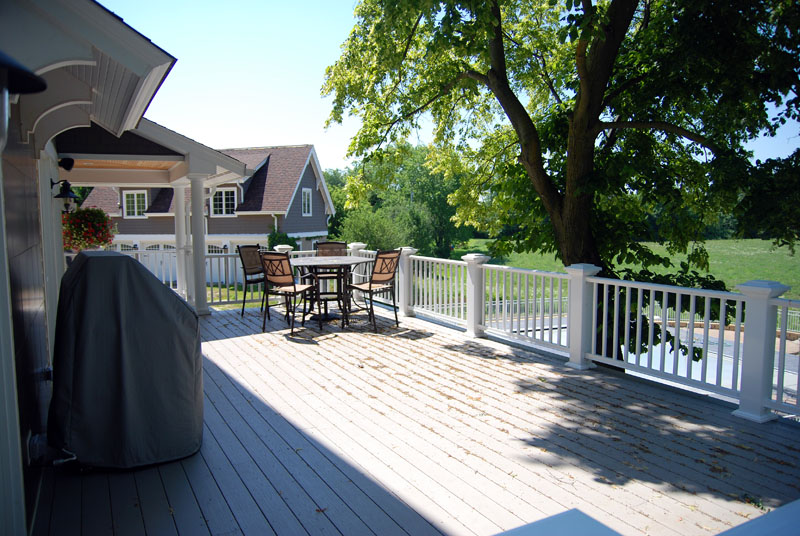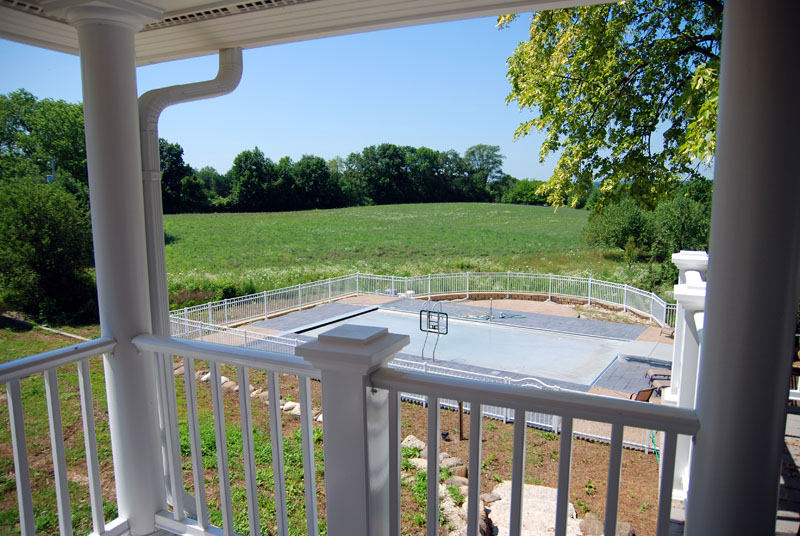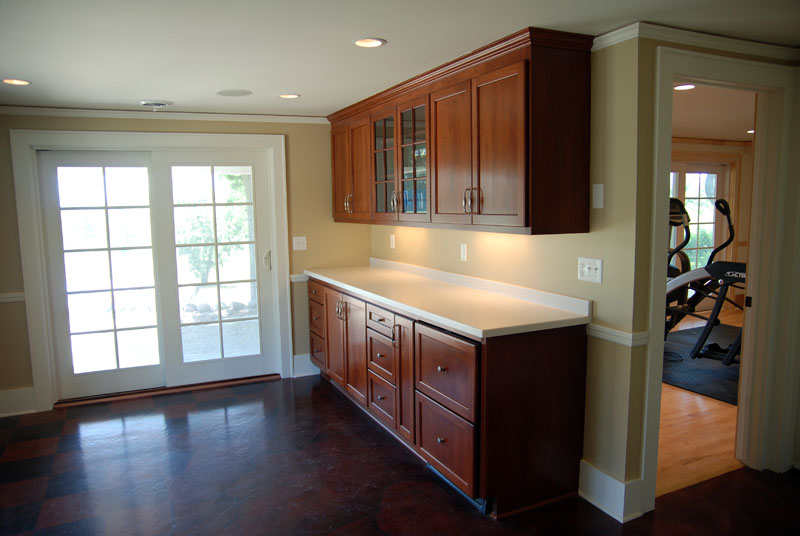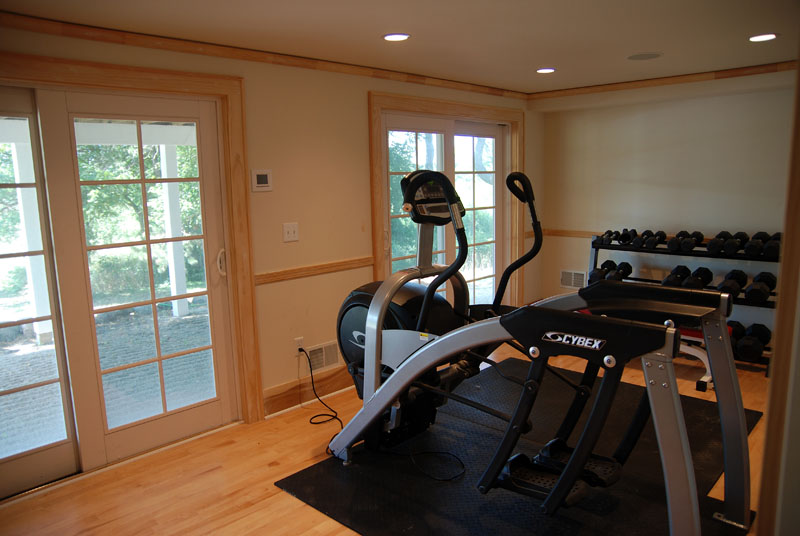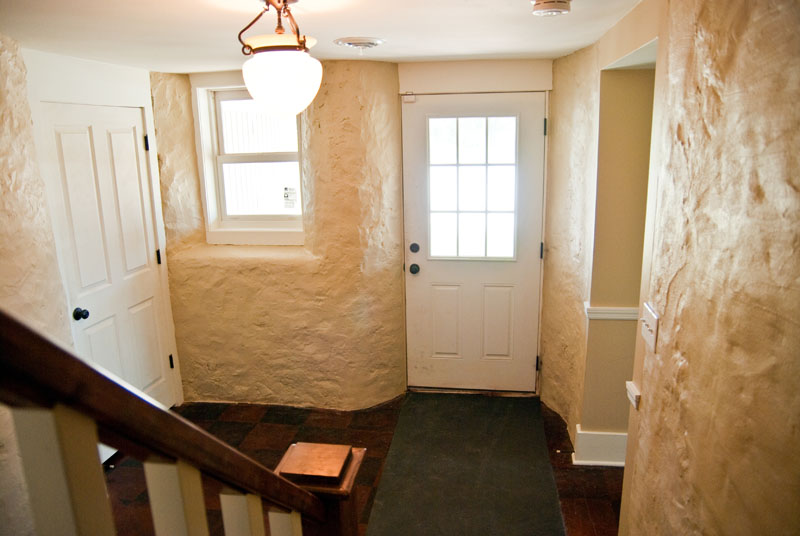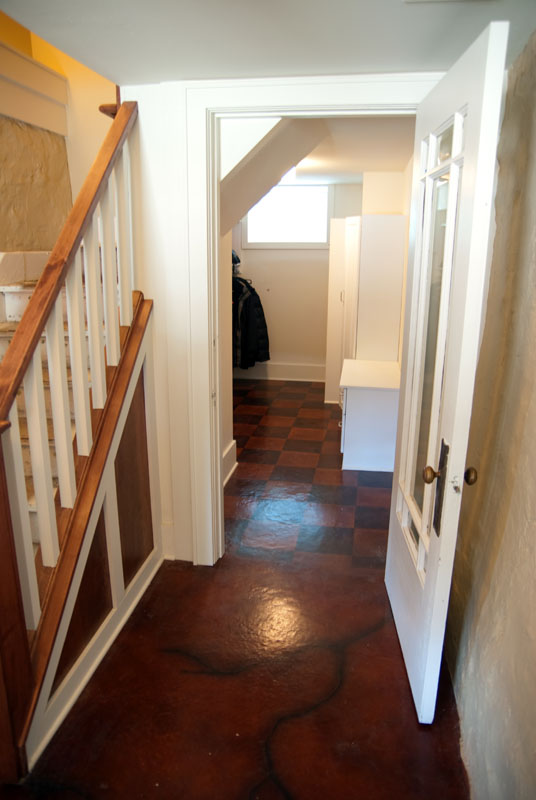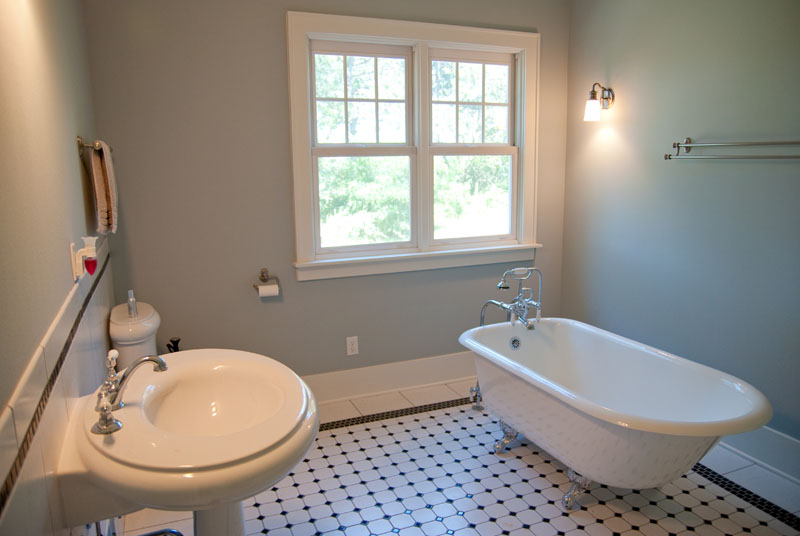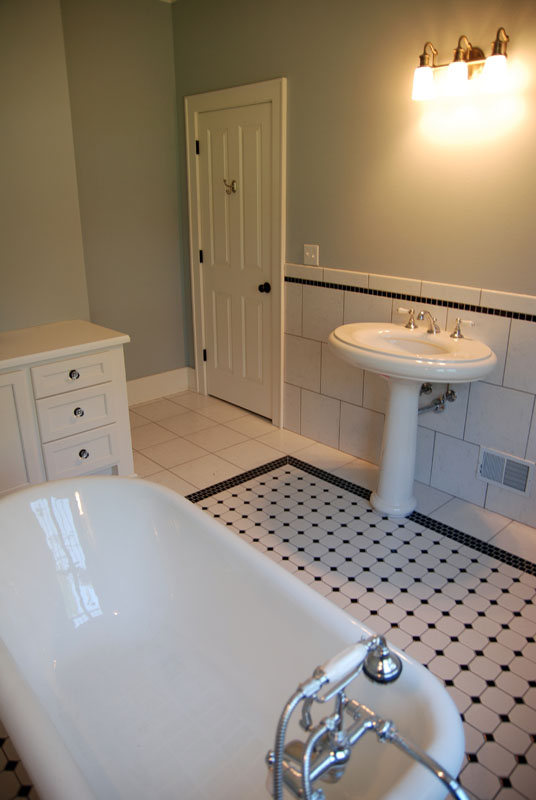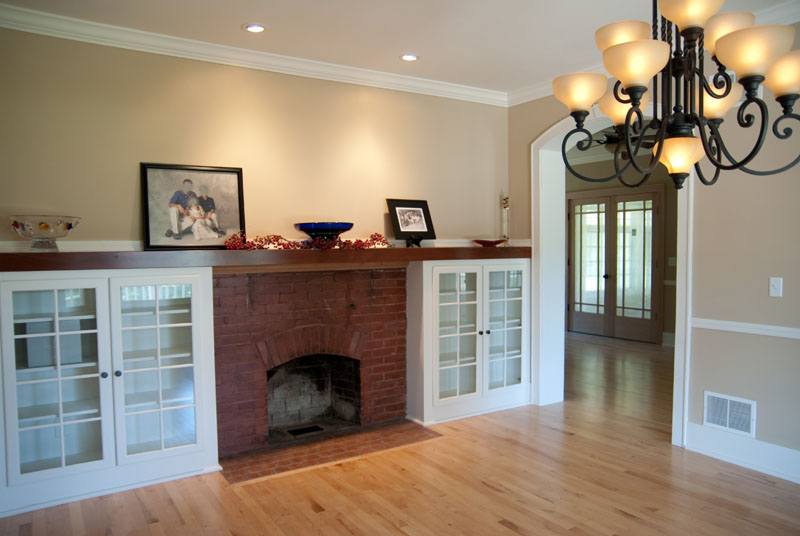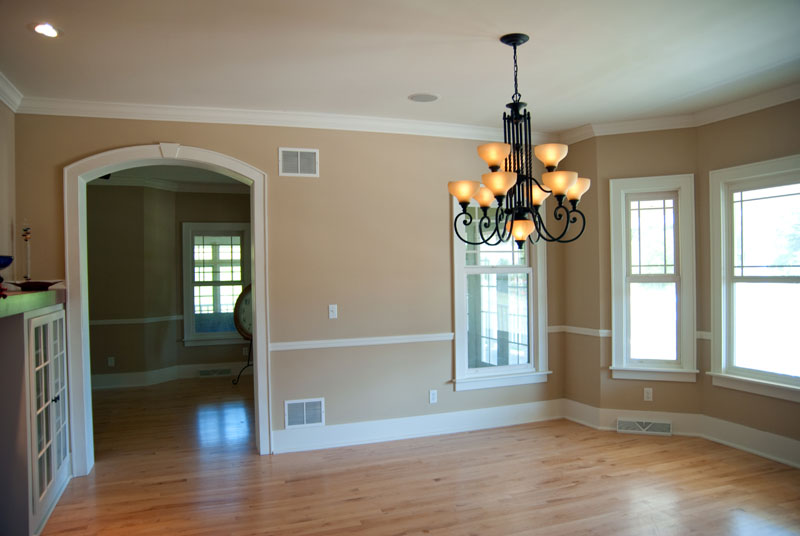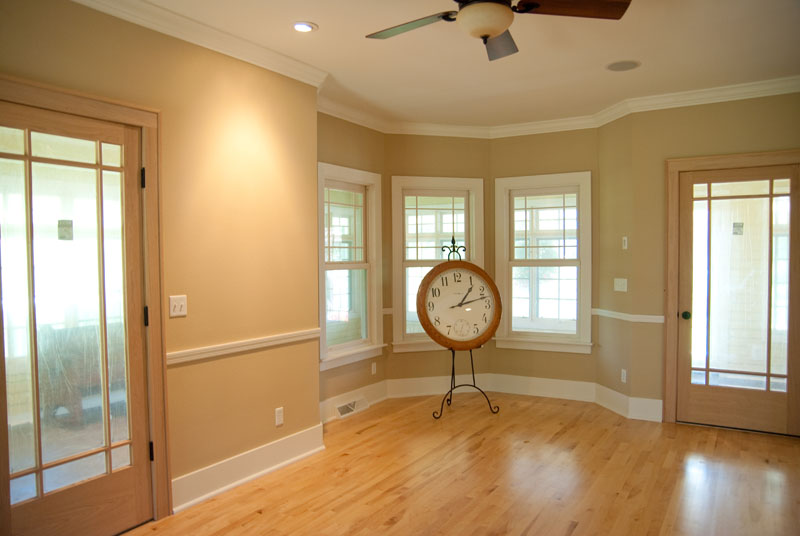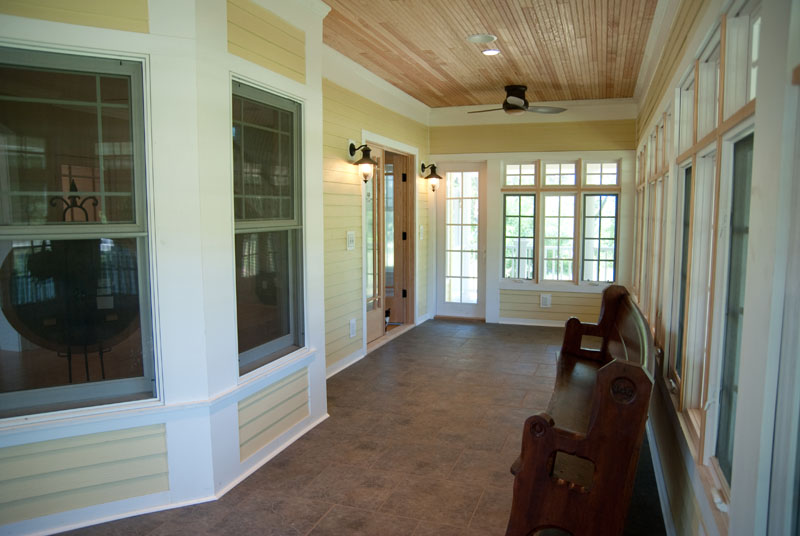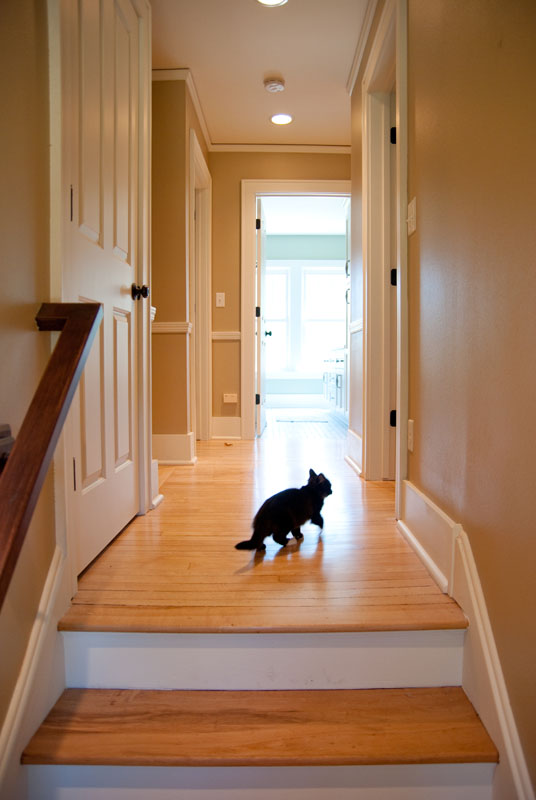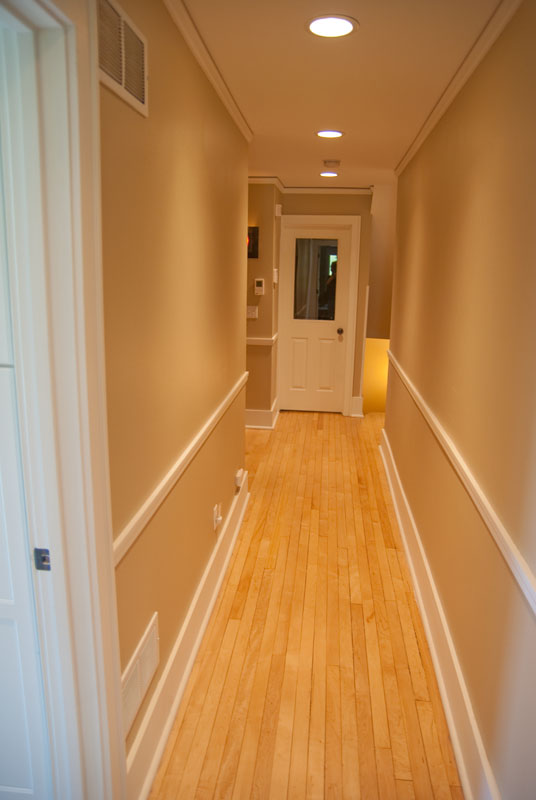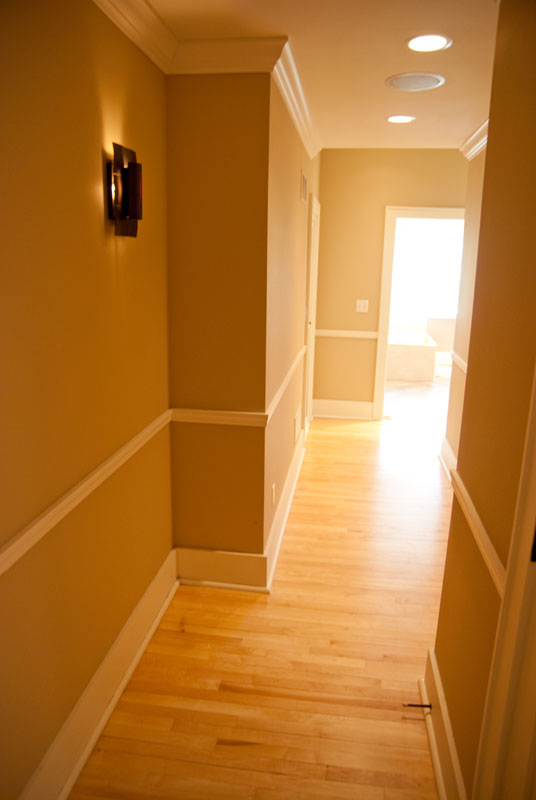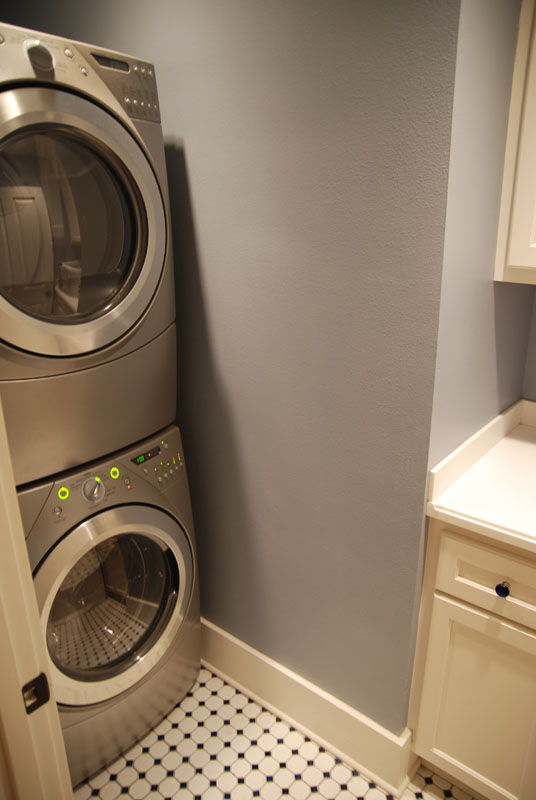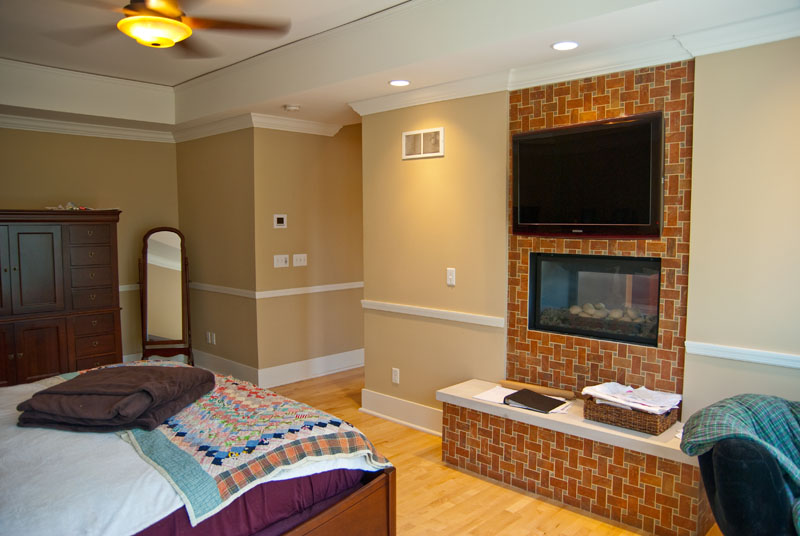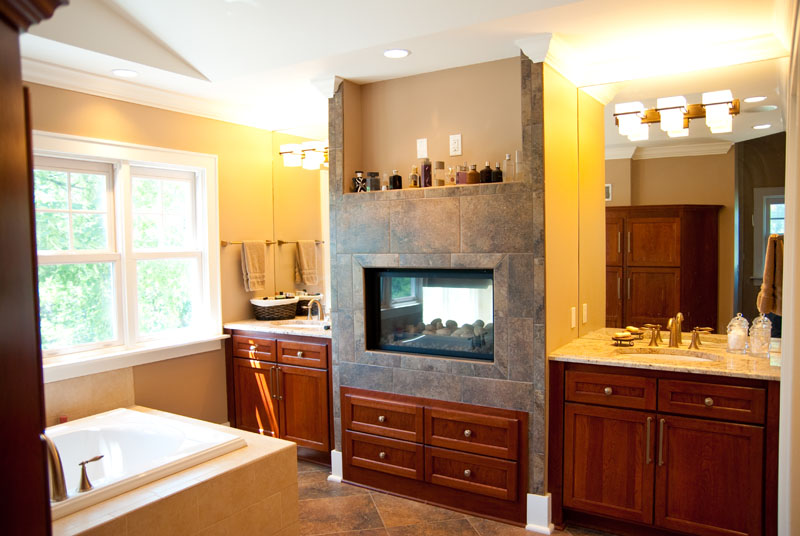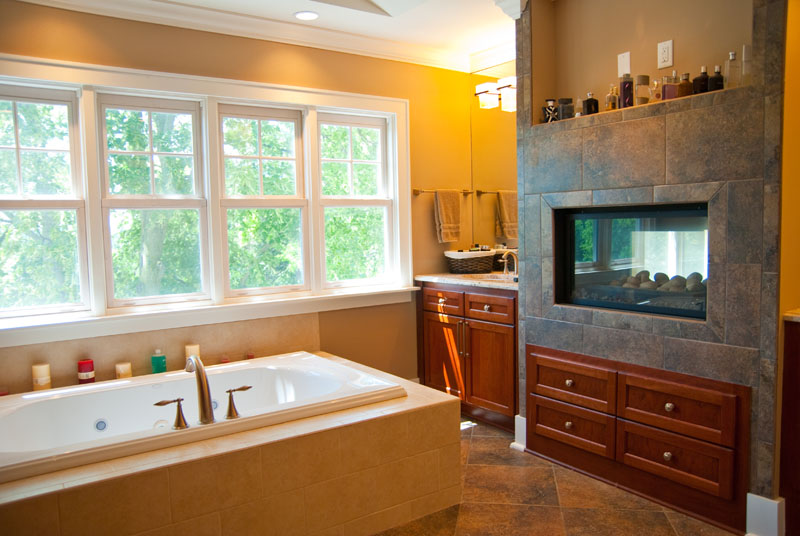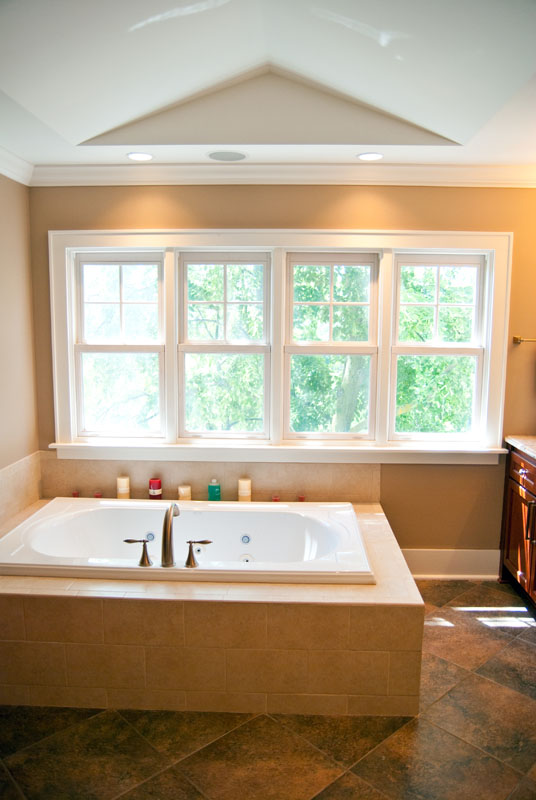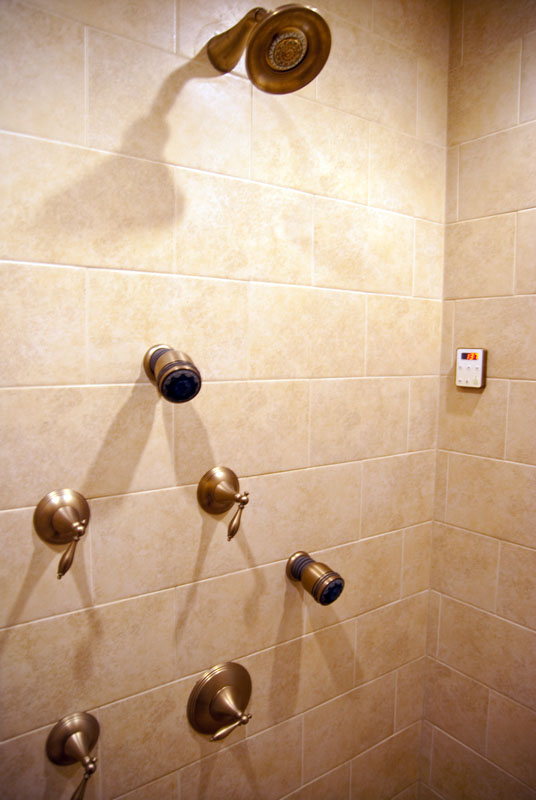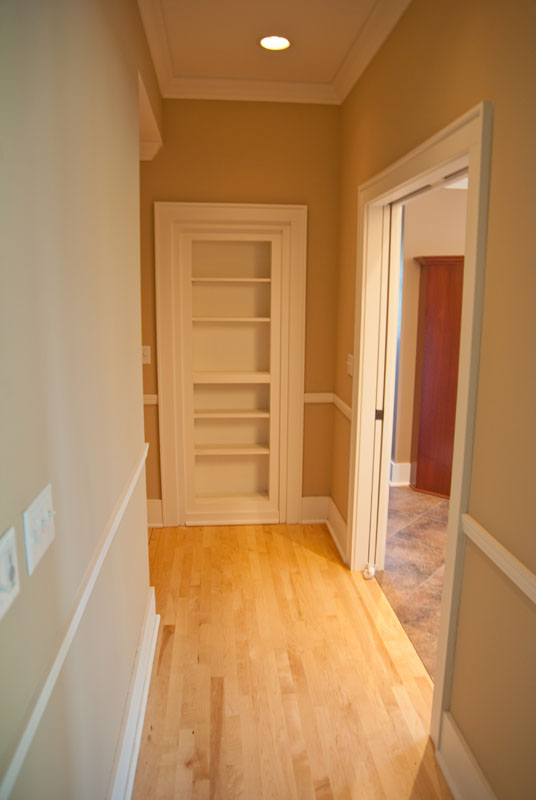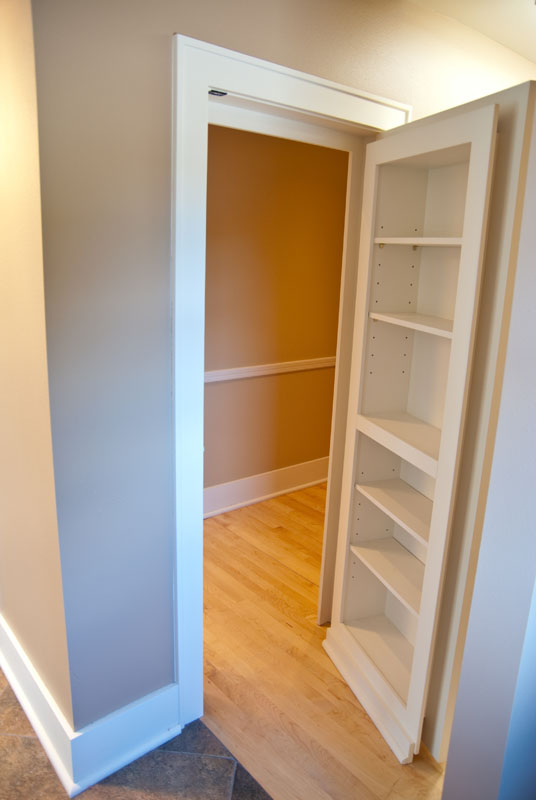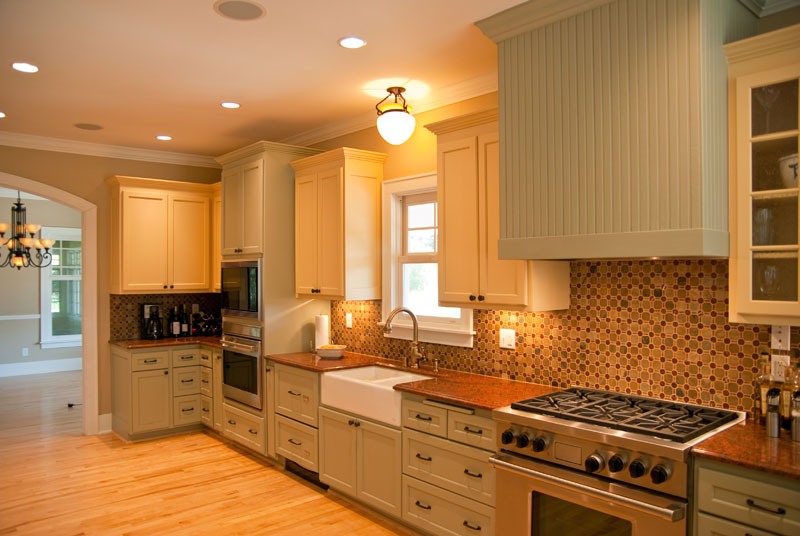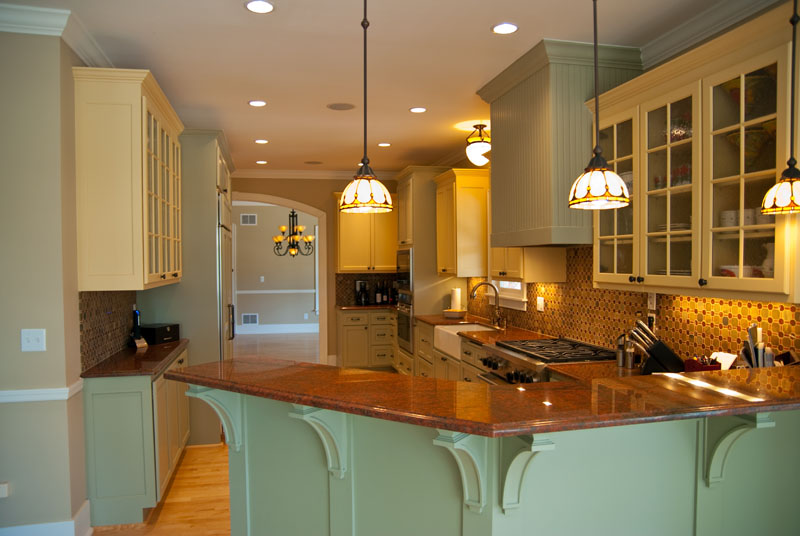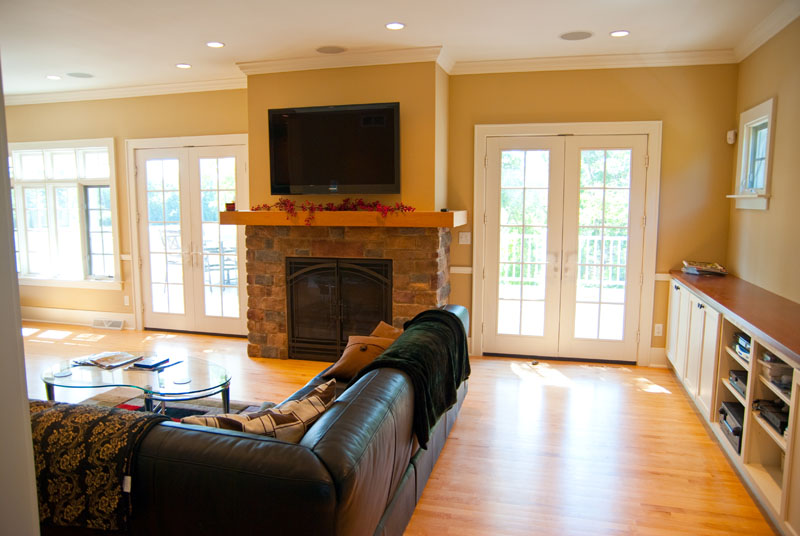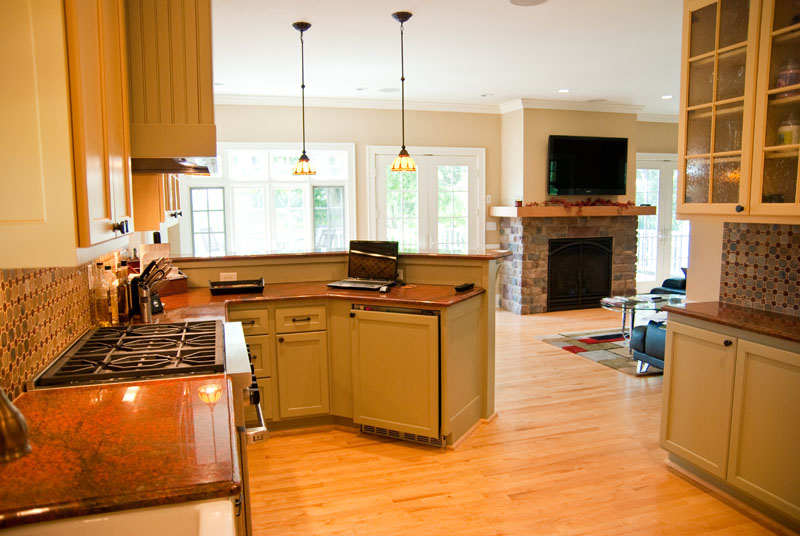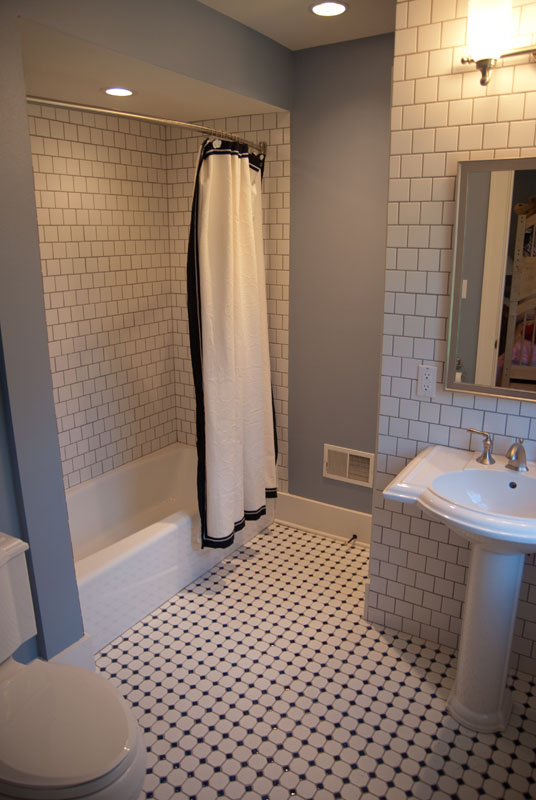Historical Renovation/Restoration, Whole house remodel, additions, and a Carriage house
Although they had construction drawings for a new home and a lake front property to build it on, the owner indicated that they always had a burning desire to rehab an old house. After diving by this property every day for two years and seeing it vacant, when the For Sale sign went in the ground, they jumped on it. They said that the price and the nearly four acres of land with apple orchards were just too good to pass up.
We met in the dead of winter for the first time and walked through the property. We were asked asked if could be saved or if it should be torn down. We responded by asking what they had in mind. “I want this old house to look like it was new when it was built in 1911.” We said that was entirely possible with a healthy budget, fortitude, and patience.
Before
After
The list of what was hoped for was not that long. Because of their career travel was extensive, anything pertaining to maintenance was not something they were into or knew anything about. When arriving home they wanted to turn on the faucet and have hot and cold water, when they wanted heat or air, turn on the thermostat. There were several wishes though they asked to have incorporated into the plans and designs, they were:
- A separate bedroom for their son and daughter with the daughter’s room having its own bathroom.
- A kitchen that a person who cooks might like to be in, connected to a big family room with lots of glass, and that has a deck looking out over a pool and the property with a place to grill.
- A workout room with a shower, sink, and toilet nearby.
- A laundry on the same floor as the bedrooms and one for larger items in the basement.
- A temperature and humidity controlled wine room.
- A big wrap around covered porch and a sun-room. A big mudroom at the rear entrance with a place to drop off stuff and grab a cold drink on the way in or out of the house.
- A full first floor bathroom that would look like it did “back then”.
- All the audio and video wiring and their controls built in.
- A heated garage with finished living space above it for guests and a gaming room. Below the garage, a ground level space for the future pool house with a bathroom.
- A big master suite. Regarding this space, “I want this to be exactly what we want, like it had been planned for the house we designed. We don’t care what you do for the rest of the house to keep it looking like the original, but this space has to be the way we would like it to be.”
- No exterior maintenance, but make it look like the original. No wavy walls, sloping creaky floors, uneven ceilings, windows and doors that open and close and block out noise, all hardwood flooring like the original with no carpet anywhere, and lighting I can use from a switch, and, that will accent my artwork. “Keep what you think you can and replace what you think has to in order to make this happen.”
With the following exceptions: three bedroom walls in the guest room, the front and rear staircases, the second floor main hallway hardwood flooring, and the wall framing of the second floor bathroom the entire interior of the house was gutted. The exterior of the house was stripped too of all its trim, siding, soffits, fascia, roofing and roof deck, the chimney removed, all overhead wiring, every window and door removed, all stoops and concrete work attached to the house was removed and the existing barn/garage demolished to the garage level. In order to restore the existing barn/garage a municipal variance had to be obtained under the pretence of a historical preservation because, as an accessory building in its original condition, it already exceeded the allowable square footage for the lot. That variance was granted with the stipulation to keep as much of the existing structure intact as possible.
Challenges with this project were abundant. The parlor room and previous front concrete porch were sagging under their own weight. There were insufficient footings in these locations and 2/3rds of the front and 12′ of the driveway side had to be excavated, jacked up in this corner, new framing, and new footings installed. Interior partition walls were unsupported to the foundation and were bearing the span of the second floor between the parlor and the dining room and the 1st floor bedroom and bathroom. Structural steel in the basement, point load footings, and re-framing for the second floor was necessary.
The framing and foundation work were only some of the circumstances encountered. The existing well was insufficient to accommodate all of the new plumbing demands. The master shower alone was responsible for an output of more gallons per minute when than the well could handle when all of its faucetry was on. A larger well and increased pump was necessary. Although we were aware of it at the time of the contract, a new septic system had to be installed for the main house. The intent was to size for and tie the carriage house into the new system. When the Building Permit for the carriage house was filed for, after the variance was granted, the County Sewer and Water officials demanded a secondary holding tank crock and trash pump be installed for the carriage house that could then tie into the main septic system.
The three story addition to the rear of the house, the veranda and deck, and the front sunroom new constructions were all without incident. Upon their completion and the installation of the TYVEK, the window and door installations began. All of the exterior trim and architectural details on the two buildings are new AZEK material and some elements such as the large corbels under the eaves were custom built on site. Every trim element matches what existed previously exactly. The flooring for the veranda is AZEK tongue and grooved porch flooring, blind fastened. This meets with the deck at the rear of the house which is AZEK deck boards. The railings surrounding the veranda and the deck are pre-finished AZEK Premier Railings and newel post sleeves. The round columns are Poly Classic, fiberglass columns that were painted to match the railings. This was the only element of the exterior finishes that was not prefinished and required painting. Of all of this, keeping the AZEK clean and bright during handling and its installation was the greatest challenge.
The horizontal lap siding on the house is pre-finished James Hardie, ColorPlus, fiber cement siding and the shakes on the second and third floor elevations of the main house and the carriage house are CertainTeed, Cedar Impressions siding in the darkest brown color manufactured for this application. All the windows and doors are new WeatherShield, Custom Shield, aluminum clad exterior, wood interior windows. The gutters and downspouts are pre-finished aluminum. Installing the 90′ + length of gutter on the long leg of the veranda was quite the feat without kinking or bending it.
All of the public utilities for the project went from being overhead to underground. That, in and of itself, was a great improvement visually on the property. Two gas meters, one of commercial size, were installed because of the new mechanicals and for the pool heat and carriage house. The two furnaces and air conditioning systems for the main house are top of the line Carrier products. In addition to one serving the attic and second floor from the attic, and the other serving the lower level and first floor from the basement, each floor is independently zoned. New 200 amp service for the main house and 150 amp electrical for the carriage house was installed. Every strand of wiring, every plumbing pipe and drain is new in both structures. The garage of the carriage house has its own heat source. The upper and lower levels of the carriage house are zoned controlled and supplied by Carrier equipment.
The interior of the two structures are insulated with high density insulation. Upon completion, the heating costs for both buildings with the addition to the main house are less than that of the original house alone.
Painstaking attention to detail was paid to the installation of the new trim to match the existing that was removed originally. Where new space was added, or unfinished space converted, the same thoughtfulness was applied to make it all blend together. Even in the case of the master suite, that skirts the edges of what would have been considered “original,” we used the same care in making these spaces congruous with the rest of the house. Of the little of the hardwood flooring that did remain, and for the existing stairs, these elements were sanded and restored to match the new hardwood flooring installed throughout. To present an original feel to the floors while blending in with the existing #2 Maple hardwood was installed.
Although some of the finishes; most notably the granite counter tops, larger ceramic tile floors in the master bath, stained and patterned concrete floors in the lower level, and some of the faucetry would not have a necessarily original feel, the net result remains balanced with the aesthetic of the project as a whole. Certainly, some latitude had to be granted to allow for the Owner’s personal style and taste.
